
Frieze Art Fair, re-named Frieze London, opens this Thursday 11 October at Regents Park. There is now also Frieze New York and Frieze Masters. This 10th edition of Frieze is apparently also the most international with exhibitors from 35 countries including Argentina, China, Columbia, Hungary, India, Korea and South Africa. Frieze Masters – newly inaugurated – stages contemporary perspectives on the art of the past. Frieze also includes Focus (open to galleries established after 2001); Frame (dedicated to galleries under 6 years old) and Frieze Projects (a programme of specially curated artist commissions). This year’s Projects is curated by Sarah McCory and consists of 5 site-specific works. There is also Frieze Talks, the Sculpture Parks, and Frieze Film (a selection of artist films again curated by McCory).
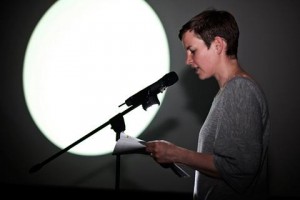
There’s enough at Frieze to keep art lovers and collectors going for days, and it’s already been well covered by the mainstream press. This weekend’s ‘Financial Times’ devotes its Collecting section to extensive coverage of the Fair. Its weekend magazine has an excellent piece by Rachel Spence on ‘The Rise of the OWAS’ or ‘older women artists’ (available on-line). Spence draws attention to the presence of these woman artists at last September’s Istanbul Biennale, and the influence of curators Jens Hoffman and Adriano Pedrosa (Sao Paulo based, Pedrosa will be curating for Frieze Masters). ‘Spotlight’ – the title of his curated exhibition for Frieze – emphasises women artists who are only now receiving recognition despite having made important, political work since the 1960s and ‘70s: artists such as Birgit Jurgenssen, Lygia Pape, Carmen Herrera, Teresa Burga, Geta Bratescu. Frieze Masters focuses on modern and contemporary art before 2000. Who decides where modern and contemporary begins and ends? My strategy, for navigating what is an overwhelming series of events and shows, will be to focus on the questions that interest me: Who are the international galleries and newcomers to Frieze? What does internationalism look like? Has the opening of Tanks, with its emphasis on moving image and performance, influenced the ways in which art is viewed, curated and collected?
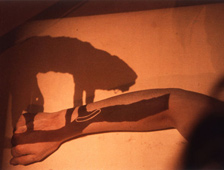
The Moving Image Contemporary Video Art Fair 2012 will be where I spend a lot of time this week. Founded by Murat Orozobekov and Edward Winkleman of New York’s Winkelman Gallery, the fair takes place at the Bargehouse on London’s South Bank. It will present an international selection of 35 single-channel videos and installations from Europe, Central Asia, the Middle East, South America and North America. The idea of an art fair devoted to a medium, and especially one that is less obviously commercial and saleable is a compelling one. Also interesting is the question of how artists are selected and whose work is shown. How are choices made when there are so many artists working with the moving image across the world today? And the process of documenting and showing video art from the ‘60s and ‘70s remains an important project, especially with all the renewed interest in neglected artists, forgotten histories and international practices. Included on the Moving Image Fair are pioneers of video art such as Gary Hill and Carolee Schneemann, one of the most important artists to work with the body and performance. I am looking forward to seeing the work of artists such as Estonian born Jaan Toomik – part of a generation that emerged in the 1990s (a decade that witnessed the acceleration of international platforms for contemporary art). Toomik’s film ‘Oleg’, tells a story of a soldier haunted by the past. The Moving Image Fair will be foregrounding relationships between art and the moving image, that speaks to the history of the medium, and its dialogue with different geographical and political conditions.
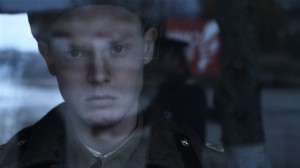
Tate Modern’s Tanks is of course now a prominent institutional base for the moving image and performance in London. But there are others and Artangel remains an important curatorial platform for these media. Not to be missed is Lindsay Seers ‘Nowhere Less Now’ at the Tin Tabernacle, Kilburn www.artangel.org.uk. I’ll be going to Bedwyr Williams’ opening at Ceri Hand on Friday 12: Williams’ comedic performances place human folly into sharp, hilarious relief. The private view will be followed by performances by Williams (and others including Mel Brimfield with Joanna Neary) at the Phoenix Arts Club www.cerihand.co.uk. I also highly recommend John Akomfrah’s extraordinary film, video and sound installations at Carroll/Fletcher www.carrollfletcher.com. Akomfrah co-founded the Black Audio Film collective in 1982. Carroll/Fletcher is also participating in the Moving Image Fair with a video (‘Tall Buildings’) by artists John Wood and Paul Harrison.

There are many other fairs, private views and miscellaneous events taking place this week. Although the loss of the Zoo art fair (the last one was 2008) is unfortunate, especially for those of us interested in looking at the work of emerging artists and galleries. There is something especially interesting about art fairs that have a particular focus. Art Fairs opening on Thursday include the Moniker Art Fair and the Sunday Art Fair (both in their 3rd edition). There is also Pad (an art and design fair) which opens on Wednesday. Phew.
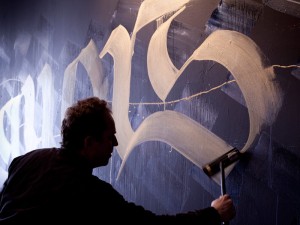
The Moniker Art Fair looks interesting in that it is deliberately positioned as an alternative event for the contemporary art market focusing on individually curated artist spaces. The emphasis is on the urban and experiential. I’m curious to see how an alternative art fair is imagined at a time when everything that was historically alternative is now appropriated by mainstream institutions. The Sunday Art Fair is gallery-led and promises a more intimate viewing experience. It is organised by three galleries: Croy Nielsen (Berlin), Limoncello (London), Tulips & Roses (Brussels). My plan for navigating through this mass of fairs, exhibitions and events is to decide on what interests me and then go for it. There’s something for everyone, and for the emerging collector I would suggest exploring alternatives to main events.
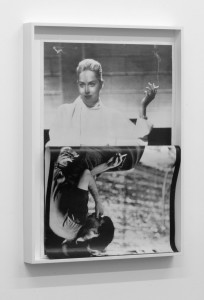
All the fairs listed here (with the exception of Pad) run from Thursday 11th through Sunday 14th October. For more info see:
Frieze London, Regent’s Park: www.friezelondon.com
Moving Image Contemporary Video Art Fair, Bargehouse, OXO Tower Wharf, Bargehouse Street, South Bank, SE1 9PH: www.moving-image.info
Moniker Art Fair, Village Underground, 54 Holywell Lane, Shoreditch, EC2A 3PQ: www.monikerartfair.com
Sunday Art Fair, Ambika P3, Marlebone Road, NW1 5LS: www.sunday-fair.com
PAD (art & design), Berkeley Square, W1: www.pad-fairs.com
Yvette Greslé for FAD





